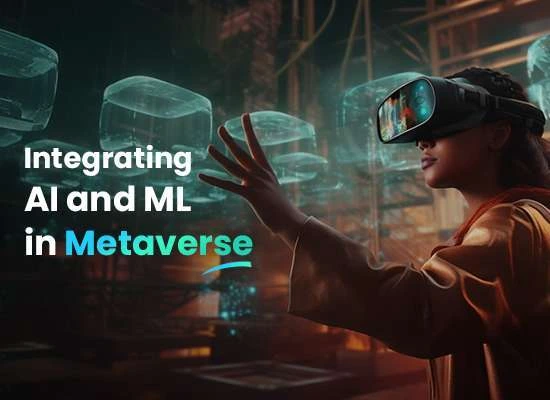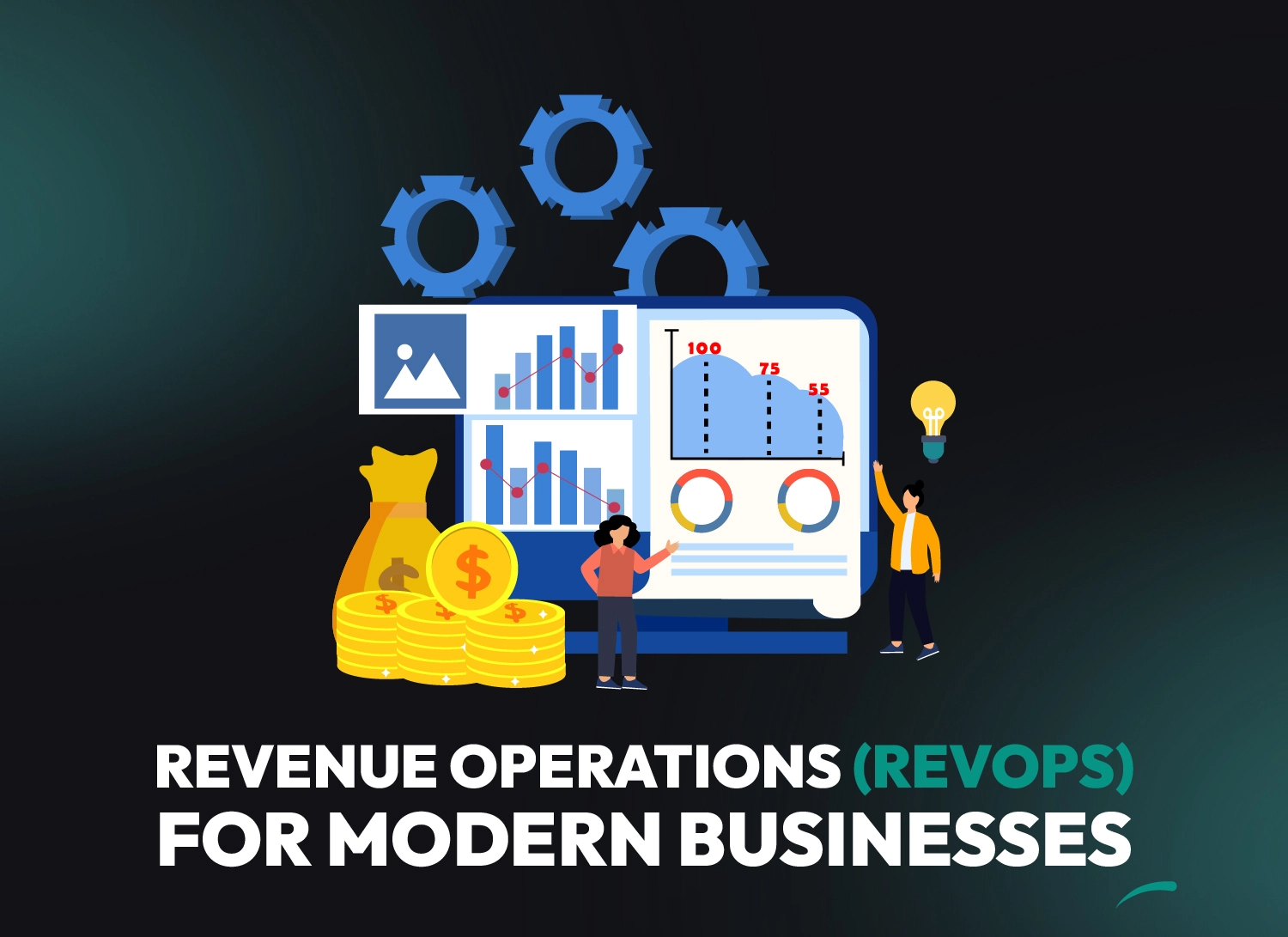
Contents
What is the Metaverse, and How is It Evolving?
The Metaverse is not just a trend—it’s a paradigm shift in how people interact with digital environments. It’s a hyper-connected, immersive digital world where users can work, socialize, shop, and play. Big tech giants like Meta, Google, and Microsoft are investing billions in creating Metaverse platforms, but there’s a crucial problem—without intelligence, the Metaverse is just a visually rich, static space.
Here’s where Artificial Intelligence (AI) comes in. AI transforms the Metaverse from a graphical experience into a smart, self-sustaining, and interactive virtual world. It powers decision-making, automation, and personalization, making virtual interactions feel more natural and engaging.
Why AI is Critical for the Metaverse?
- Without AI, avatars would be lifeless and generic
- Virtual worlds would be pre-scripted and non-adaptive
- Users wouldn’t experience dynamic personalization
- Businesses would struggle with fraud, security, and customer interactions
AI is what gives the Metaverse life—it understands, learns, and reacts just like a human brain.
Partner with Kodexo Labs to power your Metaverse with AI today!

The Role of AI in Shaping Digital and Virtual Environments:
The Metaverse is an ecosystem, but for it to function smoothly, AI must:
1️⃣ Understand Human Intent:
AI-powered natural language processing (NLP) helps chatbots, virtual assistants, and NPCs interact seamlessly with users.
2️⃣ Enhance Realism:
AI in computer vision enables the replication of real-world physics, motion, and object interactions, making the Metaverse feel more authentic.
3️⃣ Automate Content Creation:
AI can automatically generate 3D landscapes, avatars, and objects, reducing the time and effort needed for developers to build immersive environments.
4️⃣ Enable Adaptive Learning:
AI tracks user preferences and behaviors, creating personalized Metaverse experiences that evolve over time.
5️⃣ Optimize Virtual Economies:
AI plays a crucial role in Metaverse commerce, enabling fraud prevention, automated pricing, and blockchain security.
AI’s Impact on VR, AR, and MR:
The Metaverse is deeply connected with Virtual Reality (VR), Augmented Reality (AR), and Mixed Reality (MR)—and AI enhances all three:
🔹 AI in VR:
AI enhances motion tracking, spatial recognition, and predictive analytics, making VR experiences more responsive and immersive.
🔹 AI in AR:
AI-powered object recognition, AR overlays, and real-time visual enhancements make augmented reality applications seamless and interactive.
🔹 AI in MR:
AI blends digital elements with the real world, enabling real-time environmental adaptation and contextual interactions.
For Example:
AI in AR is used in smart glasses like Microsoft HoloLens, where AI processes real-world data and overlays digital content based on user surroundings.
Kodexo Labs: Driving AI Innovation in the Metaverse
At Kodexo Labs, we specialize in AI-powered solutions that enable businesses to leverage the full potential of AI in the Metaverse. Our expertise includes:
Lifelike avatars that recognize emotions, mimic gestures, and interact naturally.
Smart chatbots and voice assistants for seamless virtual interactions.
AI-driven security that protects virtual identities and assets.
Tailored AI solutions for businesses expanding into the Metaverse.
AI’s Core Technologies in the Metaverse:
AI is the backbone of the Metaverse, enabling everything from realistic avatars to intelligent automation. Without AI, the Metaverse would be nothing more than a collection of static 3D spaces. In this section, we’ll explore the core AI technologies that power the Metaverse and how businesses can leverage them.
Computer Vision & Image Recognition:
What is Computer Vision & How Does It Work in the Metaverse?
Computer Vision (CV) is a branch of AI that enables machines to analyze, interpret, and understand visual data. In the Metaverse, CV is used to:
- Scan and digitize real-world objects into 3D models
- Enable gesture and facial recognition for hyper-realistic avatars
- Allow AI-powered spatial mapping to track user movements in real time
This technology enables seamless interaction between physical and digital environments.
How AI Enhances Image Recognition in the Metaverse:
AI automatically processes and enhances images and videos, allowing the Metaverse to be more realistic and interactive. AI-powered image recognition helps in:
🔹 Object Detection & Mapping:
AI scans real-world objects and transforms them into interactive 3D assets.
🔹 Facial Expression & Motion Tracking:
AI enables avatars to replicate human emotions in real-time.
🔹 Environment Perception:
AI-driven spatial computing helps in understanding physical surroundings, essential for AR-based Metaverse experiences.
For Example:
Apple’s Face ID & ARKit use AI-powered image recognition to map facial structures and surroundings, enhancing AR applications in the Metaverse.
How Kodexo Labs Utilizes Computer Vision for Businesses:
Kodexo Labs integrates AI-powered computer vision to help businesses with:
- 3D object recognition and automation for immersive Metaverse experiences
- Facial and emotion recognition technology for next-gen avatars
- AI-powered spatial computing for businesses entering AR-based Metaverse platforms

Natural Language Processing (NLP) & AI Communication:
Why is NLP Critical for the Metaverse?
The Metaverse isn’t just about visuals—it’s about interaction. Natural Language Processing (NLP) is the AI technology that allows machines to understand and generate human language.
In the Metaverse, NLP is used for:
🔹 Conversational AI:
AI-driven chatbots that interact naturally with users.
🔹 Speech-to-Text & Text-to-Speech:
AI converts speech into text and vice versa for multilingual conversations.
🔹 Real-Time Translations:
AI eliminates language barriers in global Metaverse interactions.
How AI-Driven NLP Enhances Metaverse Interactions:
AI makes virtual conversations smarter and more natural in the Metaverse:
🔹 Voice Assistants in Virtual Spaces:
AI enables Metaverse assistants like Siri, Alexa, and GPT-based bots to assist users.
🔹 AI Chatbots for Businesses:
AI-powered customer service bots answer queries in virtual stores, offices, and conferences.
🔹 Sentiment Analysis:
AI detects user emotions and adjusts responses accordingly for a better immersive experience.
For Example:
Meta’s AI-powered Horizon Workrooms uses NLP-based voice recognition to create real-time interactions in virtual workspaces.
How Kodexo Labs Uses NLP for AI-Powered Communication:
Kodexo Labs specializes in AI-driven conversational technologies, offering:
- Multilingual NLP-powered chatbots for seamless communication
- AI voice assistants for Metaverse-based customer engagement
- Sentiment-aware AI interactions to enhance virtual brand experiences

Reinforcement Learning for AI Adaptation:
What is Reinforcement Learning & Why Does It Matter in the Metaverse?
Reinforcement Learning (RL) is a type of AI that learns from experiences and adapts based on feedback. In the Metaverse, RL is essential because:
- AI-powered NPCs can evolve over time based on user interactions.
- AI learns user behavior and preferences, enhancing personalization.
- AI-driven simulations adjust dynamically for virtual training, gaming, and business applications.
How Reinforcement Learning is Applied in the Metaverse:
🔹 Smart NPCs & Virtual Assistants:
NPCs adapt based on user behaviors for a realistic, unscripted experience.
🔹 AI-Generated Content Learning:
AI self-improves over time, making virtual environments more dynamic.
🔹 Automated AI Training:
AI learns complex patterns and decision-making, essential for Metaverse automation.
For Example:
DeepMind’s AI-powered simulations allow AI agents to self-train for decision-making in digital environments.
How Kodexo Labs Utilizes Reinforcement Learning for Businesses:
Kodexo Labs provides AI-powered RL models for:
- Self-learning AI systems for adaptive Metaverse automation
- AI-enhanced customer experiences through learning-based interactions
- AI-driven training models for Metaverse education and business applications

AI and Blockchain Integration:
Why AI & Blockchain Are a Powerful Duo in the Metaverse:
Blockchain provides decentralization and security, while AI brings automation and intelligence. Together, they enhance the Metaverse by:
- AI-driven smart contracts for automated transactions
- AI-powered fraud detection for NFTs and virtual assets
- AI-enhanced decentralized identity verification
How AI Enhances Blockchain in the Metaverse:
🔹 AI-Powered Smart Contracts:
AI automates contract execution, fraud detection, and security verification.
🔹 AI for NFT Marketplaces:
AI analyzes transaction patterns, ensuring secure NFT trading.
🔹 AI-Driven Fraud Prevention:
AI detects fake transactions and scams in Metaverse finance.
For Example:
IBM’s AI-enhanced blockchain security prevents fraud in decentralized applications.
How Kodexo Labs Combines AI & Blockchain for Businesses:
Kodexo Labs integrates AI with blockchain to help businesses with:
- AI-driven fraud detection for blockchain-based transactions
- AI-powered automated smart contracts
- AI-enhanced NFT security & identity verification

AI’s Impact on Metaverse Experiences:
AI is not just a technical component of the Metaverse—it’s the driving force behind immersive, intelligent, and user-friendly digital experiences. From hyper-realistic avatars to AI-powered virtual assistants, gaming, and smart city simulations, AI makes the Metaverse more dynamic, responsive, and personalized.
In this section, we’ll explore how AI is shaping experiences in the Metaverse and how businesses can leverage it for growth.
AI-Generated Avatars & Digital Humans:
What Are AI-Generated Avatars & Why Do They Matter?
In the Metaverse, avatars represent users in a digital world. But not all avatars are equal—some are just static 3D characters, while AI-generated avatars are dynamic, realistic, and emotionally expressive.
- AI helps personalize avatars with unique facial structures, emotions, and body language.
- AI enables adaptive avatars that evolve based on user preferences and behavior.
- AI allows avatars to speak, react, and interact with other users in real-time.
Why AI-Driven Avatars Matter in the Metaverse:
- Without AI, avatars are lifeless and generic.
- AI-powered avatars enhance identity expression and user engagement.
- AI enables real-time facial tracking and emotion detection for hyper-realistic interactions.
For Example:
Meta’s AI-driven avatars replicate human expressions using computer vision and deep learning, making Metaverse interactions more natural and engaging.
How Kodexo Labs Enhances AI-Driven Avatars for Businesses:
Kodexo Labs leverages AI to create next-gen, dynamic avatars with:
- Emotion & Facial Recognition AI for hyper-realistic expressions
- Adaptive AI for avatars that evolve based on user interactions
- Conversational AI that allows avatars to speak, interact, and learn
AI-Powered Virtual Assistants & Chatbots:
Why AI Virtual Assistants Are Key to the Metaverse:
The Metaverse isn’t just about visuals—it’s about seamless interactions. AI-powered virtual assistants act as guides, customer service reps, and business representatives in digital spaces.
How AI Virtual Assistants Work in the Metaverse:
IBM’s AI-enhanced blockchain security prevents fraud in decentralized applications.
🔹 Conversational AI Chatbots:
AI chatbots answer user queries, guide customers, and assist businesses in Metaverse environments.
🔹 Voice Assistants in VR & AR:
AI-powered voice assistants like Siri, Alexa, and GPT-based bots allow users to speak naturally in the Metaverse.
🔹 AI-Powered Digital Humans:
AI-driven NPCs (non-playable characters) act as tour guides, hosts, and customer support agents in virtual spaces.
For Example:
AI-powered chatbots in Metaverse retail stores help users with product recommendations, customer queries, and transactions.
How Kodexo Labs Enhances AI-Powered Virtual Assistants:
Kodexo Labs specializes in Conversational AI solutions that enable businesses to:
- Deploy AI chatbots for customer interactions in Metaverse stores & offices
- Use AI-powered voice assistants for virtual events & meetings
- Enhance brand engagement with interactive AI-driven NPCs

AI-Generated Virtual Worlds & Cities:
How AI Creates & Manages Virtual Environments:
AI isn’t just helping individual users—it’s shaping entire virtual cities and worlds in the Metaverse. AI-powered procedural content generation enables the creation of dynamic environments that adapt to user behavior.
- AI can build entire landscapes, buildings, and infrastructure based on real-world data.
- AI-driven smart cities optimize virtual traffic, urban planning, and infrastructure maintenance.
- AI enables self-learning environments that evolve with time.
How Kodexo Labs Powers AI-Driven Virtual World Creation:
Kodexo Labs helps businesses create and manage AI-generated virtual environments through:
- AI-powered landscape and architecture modeling
- AI-driven simulations for smart city planning in the Metaverse
- AI automation tools for urban development & real estate applications
AI in Gaming & Entertainment:
AI is Revolutionizing Gaming in the Metaverse:
Gaming is one of the biggest industries in the Metaverse, and AI is taking it to the next level with:
🔹 AI-Powered NPCs:
NPCs (non-playable characters) learn and react dynamically, rather than following pre-scripted behavior.
🔹AI-Driven Procedural Content Generation:
AI creates new maps, levels, and assets automatically, making gameplay more engaging and less predictable.
🔹 AI in Virtual Reality (VR) Gaming:
AI enhances motion tracking, real-time rendering, and AI-powered enemy behaviors in VR games.
For Example:
AI-powered NPCs in Red Dead Redemption 2 behave realistically, reacting to player choices and environment changes dynamically.
How Kodexo Labs Enhances AI-Powered Gaming:
Kodexo Labs provides AI-driven solutions to game developers looking to:
- Use AI for self-learning NPCs that adapt to players’ actions
- Automate game content creation using AI-powered procedural tools
- Implement AI-powered recommendation engines for in-game purchases & personalization
AI in Metaverse-Based Business & Commerce:
The Metaverse is rapidly transforming into a digital economy, where AI plays a crucial role in enhancing business operations, improving user experiences, and securing transactions. From AI-powered virtual shopping assistants to blockchain-driven real estate transactions and targeted advertising, AI is redefining commerce in this new digital landscape.
In this section, we explore how AI is reshaping business opportunities in the Metaverse and how organizations can leverage AI-driven solutions for success.
AI in Virtual Shopping & E-Commerce:
Revolutionizing Online Shopping in the Metaverse with AI:
As the Metaverse continues to evolve, AI-driven e-commerce platforms are providing users with personalized, interactive, and immersive shopping experiences. Unlike traditional online shopping, AI enhances virtual retail environments by:
🔹Personalized Product Recommendations:
AI algorithms analyze user behavior and preferences to deliver tailored product suggestions, improving engagement and conversions.
🔹AI-Driven Virtual Try-Ons:
AI-powered augmented reality (AR) applications allow customers to try on clothing, accessories, and makeup in real-time before making a purchase.
🔹Conversational AI & Virtual Assistants:
AI-driven chatbots assist customers by answering queries, providing recommendations, and streamlining transactions.
🔹Automated Pricing Strategies:
AI dynamically adjusts pricing based on real-time demand, competitor analysis, and user interactions.
Case Study:
Nike’s Metaverse Store (Nikeland on Roblox) utilizes AI-powered virtual assistants to help customers explore products, make informed decisions, and receive personalized recommendations.
Kodexo Labs’ AI-Driven Solutions for E-Commerce:
Kodexo Labs empowers businesses to integrate AI-driven e-commerce solutions in the Metaverse by offering:
- AI-powered recommendation engines for personalized shopping experiences.
- Computer vision-driven virtual try-on technology for fashion, beauty, and accessories.
- Conversational AI chatbots for seamless customer support in virtual stores.
AI in Virtual Real Estate & Digital Asset Management:
The Role of AI in Metaverse Real Estate Transactions:
Virtual real estate is emerging as a high-value asset class in the Metaverse, with companies and individuals investing in digital properties for commercial and entertainment purposes. AI plays a pivotal role in streamlining and securing these transactions by:
🔹AI-Powered Property Valuation:
AI assesses property values based on foot traffic, location demand, and digital world trends, ensuring fair pricing.
🔹AI-Driven Investment Analytics:
AI provides investors with predictive insights on the most profitable virtual properties.
🔹Smart Contracts & Fraud Prevention:
AI enhances blockchain-based smart contracts to facilitate secure, automated property transactions while preventing fraudulent activities.
🔹AI for Property Management:
AI automates maintenance, security, and leasing operations for virtual real estate owners.
Case Study:
Decentraland’s AI-Powered Real Estate Marketplace provides users with real-time property valuation and transaction automation powered by AI and blockchain technology.
Kodexo Labs’ AI-Driven Solutions for Virtual Real Estate:
Kodexo Labs helps real estate firms, investors, and businesses navigate AI-powered virtual property management by offering:
- AI-powered analytics for virtual real estate valuation and investment insights.
- AI-driven automation for secure, blockchain-based real estate transactions.
- AI-enhanced asset management solutions for digital property leasing and maintenance.

AI in Digital Marketing & Advertising in the Metaverse:
AI-Powered Targeted Advertising & Brand Engagement:
As the Metaverse evolves, businesses need new-age marketing strategies to engage their audiences effectively. AI enhances digital marketing in virtual spaces by:
🔹AI-Driven Personalized Advertising:
AI tracks user behaviors, interests, and engagement levels to deliver hyper-targeted ads in real-time.
🔹Virtual Influencer Marketing & AI-Generated Ads:
AI-powered digital influencers interact with users and promote brands organically within the Metaverse.
🔹Dynamic Ad Placements & Optimization:
AI analyzes real-time user engagement to optimize ad placements for maximum visibility and conversion rates.
🔹AI in Voice & Conversational Marketing:
AI-driven chatbots engage users in real-time, providing product recommendations, promotional updates, and personalized offers.
Case Study:
Coca-Cola’s AI-Driven Virtual Brand Campaigns in Decentral and create immersive, gamified experiences that enhance brand engagement.
Kodexo Labs’ AI Solutions for Metaverse Marketing:
Kodexo Labs provides AI-powered marketing and advertising solutions that help brands connect with their Metaverse audience through:
- AI-driven ad targeting and personalization.
- AI-powered content creation for brand storytelling in the Metaverse.
- AI-based ad placement optimization and analytics.
AI for Security & Trust in the Metaverse:
As the Metaverse expands, security and trust have become critical concerns. The vast digital landscape, combined with real-time interactions and virtual transactions, presents new vulnerabilities such as fraud, deepfakes, identity theft, and AI bias. Businesses and users require robust security mechanisms to ensure safe participation in virtual worlds.
AI plays a pivotal role in securing the Metaverse, enhancing fraud detection, ethical AI usage, and privacy protection. In this section, we explore how AI strengthens security, trust, and data integrity in the Metaverse.
AI in Cybersecurity & Fraud Prevention:
The Metaverse is a high-risk environment for cyberattacks, given its integration with financial transactions, personal identities, and decentralized assets. AI enhances Metaverse cybersecurity by:
🔹AI-Powered Fraud Detection:
AI continuously scans for suspicious activities, abnormal transactions, and unauthorized access attempts.
🔹Biometric AI Security And Authentication:
AI-based facial recognition, fingerprint scanning, and voice authentication prevent identity theft and impersonation.
🔹Deepfake Detection AI:
AI algorithms detect and flag synthetically generated videos and images, preventing misinformation and identity fraud.
🔹Automated AI Threat Intelligence:
AI-driven cybersecurity models predict and neutralize cyber threats before they cause damage.
Case Study:
AI-driven fraud detection tools such as Darktrace and Microsoft Defender use machine learning algorithms to automatically detect anomalies in virtual transactions and prevent Metaverse-related cyberattacks.
Kodexo Labs’ AI Solutions for Cybersecurity in the Metaverse:
Kodexo Labs leverages AI to enhance security in virtual environments through:
- AI-based fraud detection and anomaly detection for financial transactions.
- Biometric AI authentication for secure Metaverse logins and accounts.
- Deepfake detection AI to prevent impersonation and misinformation.
AI for Ethical AI & Bias Reduction:
One of the biggest concerns surrounding AI in the Metaverse is bias in decision-making algorithms. AI models trained on biased data can lead to discriminatory outcomes, unfair avatar representations, and exclusionary practices. AI ethics ensure fairness, transparency, and inclusivity in digital spaces.
🔹Bias-Free AI Decision Making:
AI models must be trained on diverse datasets to ensure fairness.
🔹AI Ethics in Avatar Creation:
AI ensures that digital representations are inclusive and free from stereotypes or discrimination.
🔹AI-P:owered Content Moderation:
AI automatically flags inappropriate behavior, hate speech, and misinformation.
🔹Transparent AI Algorithms:
AI decision-making should be explainable, auditable, and accountable.
Case Study:
IBM’s AI Fairness 360 is a tool that audits AI models for bias detection and correction, ensuring equity in Metaverse interactions.
Kodexo Labs’ Commitment to Ethical AI:
Kodexo Labs ensures AI fairness and transparency by:
- Developing AI models that eliminate biases and ensure fairness.
- Integrating AI-driven content moderation tools for virtual platforms.
- Providing AI transparency reports to ensure accountability in decision-making.
AI for User Privacy & Data Protection:
As users interact with Metaverse platforms, personal data, financial details, and behavioral patterns become highly vulnerable to data breaches and misuse. AI strengthens privacy protection by:
🔹AI-Driven Data Encryption:
AI ensures that user data is encrypted and protected from unauthorized access.
🔹AI-Powered User Consent Management:
AI enables real-time tracking of user consent for data sharing.
🔹Privacy-Preserving AI Algorithms:
AI models process user data without exposing identifiable information.
🔹AI-Based Intrusion Detection Systems (IDS):
AI continuously scans for unauthorized data access attempts and blocks potential breaches.
Case Study:
Apple’s AI-powered privacy framework uses on-device AI processing to analyze user behavior without storing identifiable data in cloud servers.
Kodexo Labs’ AI-Driven Privacy Protection Solutions:
Kodexo Labs prioritizes user privacy and data protection in the Metaverse through:
- AI-driven data encryption and privacy-preserving AI solutions.
- AI-based real-time intrusion detection for unauthorized data access.
- User-centric AI models that comply with global privacy regulations, including GDPR and CCPA.
AI-Powered Metaverse Workspaces & Education:
The Metaverse is reshaping the way people work and learn, creating opportunities for businesses and educational institutions to adopt AI-driven virtual environments. AI enhances productivity, collaboration, and knowledge-sharing in Metaverse-based workspaces and classrooms, making virtual interactions more immersive and effective.
This section explores how AI is transforming Metaverse-based workplaces, education, and healthcare, making digital experiences more intuitive and accessible.
AI in Virtual Learning & Education:
The Metaverse is reshaping the way people work and learn, creating opportunities for businesses and educational institutions to adopt AI-driven virtual environments. AI enhances productivity, collaboration, and knowledge-sharing in Metaverse-based workspaces and classrooms, making virtual interactions more immersive and effective.
This section explores how AI is transforming Metaverse-based workplaces, education, and healthcare, making digital experiences more intuitive and accessible.
🔹AI-Driven Personalized Learning:
AI tailors learning content based on students’ strengths and weaknesses, adapting in real-time to optimize knowledge retention.
🔹AI-Powered Virtual Tutors:
AI chatbots and avatars provide on-demand assistance, helping students navigate complex subjects with real-time feedback.
🔹AI-Enhanced Immersive Simulations:
AI creates realistic learning environments, allowing students to experience hands-on training in subjects such as medicine, engineering, and history.
🔹Automated Assessments and Grading:
AI-powered tools assess student performance through quizzes, assignments, and interactive exercises, reducing the burden on educators.
Case Study:
Stanford University’s VR-based AI education platform provides students with immersive learning experiences, using AI-driven virtual tutors and simulations to enhance engagement.
Kodexo Labs' Role in AI-Powered Education Solutions:
Kodexo Labs enables businesses and institutions to adopt AI-powered education solutions in the Metaverse by offering:
- AI-powered adaptive learning platforms for personalized education.
- AI-driven virtual tutors and chatbots for student engagement.
- AI-based assessment tools for automated grading and performance tracking.
AI in Metaverse-Based Remote Work & Collaboration:
🔹AI-Powered Virtual Assistants:
AI-driven assistants schedule meetings, manage workflows, and automate administrative tasks, reducing manual workload.
🔹AI-Driven Sentiment Analysis:
AI analyzes employee engagement and emotions in virtual meetings, helping managers understand team morale and improve interactions.
🔹AI-Enhanced Language Translation:
AI-powered multilingual communication tools break language barriers, making remote collaboration seamless for global teams.
🔹AI-Automated Meeting Summaries:
AI generates real-time transcriptions and action items, ensuring meeting efficiency and follow-ups.
Case Study:
Microsoft’s AI-driven Metaverse platform, Mesh for Teams, integrates AI-powered avatars and smart collaboration tools to enhance virtual teamwork.
AI in Digital Healthcare & Telemedicine:
AI-powered healthcare applications in the Metaverse enable remote patient care, virtual diagnostics, and AI-assisted treatments, making healthcare more accessible and efficient.
🔹AI-Driven Telemedicine Consultations:
AI-powered virtual doctors provide medical advice, monitor symptoms, and assist in early diagnosis.
🔹AI-Powered Medical Simulations:
AI creates realistic training simulations for medical students and professionals, allowing hands-on practice in a risk-free environment.
🔹AI-Enhanced Mental Health Therapy:
AI chatbots and virtual therapists provide emotional support and mental health assistance in immersive environments.
🔹AI-Based Predictive Diagnostics:
AI analyzes patient data to detect potential health risks and recommend preventive measures.
Case Study:
XRHealth integrates AI-powered virtual therapy solutions, providing personalized treatments for PTSD, anxiety, and physical rehabilitation.
Kodexo Labs' Role in AI-Driven Healthcare Solutions:
Kodexo Labs offers AI-driven healthcare solutions for Metaverse applications, including:
- AI-powered telemedicine and virtual healthcare platforms.
- AI-driven predictive analytics for early disease detection.
- AI-based mental health support tools in virtual environments.
Future Trends & Challenges in AI-Powered Metaverse:
The integration of AI in the Metaverse is still evolving, with rapid advancements shaping how businesses, consumers, and organizations engage in virtual environments. While AI-driven Metaverse solutions continue to push boundaries in areas like automation, personalization, and immersive experiences, several challenges must be addressed for sustainable growth.
This section explores the future trends driving AI in the Metaverse and the key challenges that businesses and developers must overcome to unlock its full potential.
AI’s Role in the Future of the Metaverse:
Advancements in AI-Driven AR/VR and Haptic Feedback:
Artificial intelligence is enhancing Augmented Reality (AR), Virtual Reality (VR), and Mixed Reality (MR) experiences, making virtual interactions feel more natural and immersive.
🔹AI-Powered Spatial Computing:
AI enables real-time understanding of user environments, allowing for seamless AR/VR integration.
🔹Haptic Feedback AI:
AI-driven sensors enhance touch-based interactions in the Metaverse, making virtual experiences more lifelike.
🔹AI-Generated Dynamic Environments:
AI adjusts virtual landscapes based on user behavior, enhancing personalization.
🔹AI-Enhanced Real-Time Rendering:
AI optimizes frame rates and processing power for smoother AR/VR experiences.
Case Study:
Meta’s AI-powered Presence Platform enhances AR/VR experiences by improving gesture tracking, voice interactions, and AI-driven environmental adjustments.
AI-Enhanced Metaverse Economies and AI-Powered DAOs:
The Metaverse is becoming a decentralized economy, where AI automates financial transactions, asset management, and governance models. AI-powered Decentralized Autonomous Organizations (DAOs) are playing a crucial role in managing digital assets, decision-making, and user engagement.
🔹AI-Driven Smart Contracts:
AI enhances blockchain-based contracts, ensuring faster and more secure transactions.
🔹AI-Powered Financial Analytics:
AI predicts market trends and optimizes virtual asset investments.
🔹AI-Assisted Governance in DAOs:
AI enables autonomous decision-making for decentralized Metaverse communities.
🔹AI-Driven Fraud Prevention:
AI detects suspicious activities and prevents unauthorized financial transactions.
Case Study:
Alethea AI’s Intelligent NFT ecosystem uses AI-powered DAOs to manage self-learning NFTs that evolve based on interactions.
Challenges of AI in the Metaverse:
Computational Power and Energy Consumption:
AI models require high computational resources to process large datasets, power immersive environments, and provide real-time decision-making. As AI adoption in the Metaverse grows, computational inefficiencies and energy consumption become major concerns.
🔹High-Performance AI Processing:
AI-powered simulations demand significant GPU and CPU resources, increasing operational costs.
🔹Scalability Concerns:
The Metaverse requires AI models that can scale efficiently across multiple platforms.
🔹Energy-Efficient AI Algorithms:
AI researchers are working on sustainable AI models to reduce power consumption.
🔹Quantum AI Advancements:
Quantum computing is expected to enhance AI capabilities in the Metaverse by enabling faster and more efficient processing.
Case Study:
Google’s DeepMind AI researchers are developing energy-efficient AI models to reduce power consumption while maintaining high-performance computing.
AI Bias, Security Risks, and Ethical Concerns:
AI enhances automation and personalization in the Metaverse, but it also introduces risks such as bias, security vulnerabilities, and ethical challenges. Addressing these issues is essential to ensure fairness, trust, and security in virtual environments.
Key AI Challenges in the Metaverse:
🔹Bias in AI Algorithms:
- AI models trained on limited or biased datasets can lead to unfair virtual interactions.
- This can affect avatar representation, content recommendations, and digital access.
- Businesses must ensure AI is trained on diverse and inclusive datasets to prevent discrimination.
🔹Data Privacy & Security Risks:
- AI processes large volumes of user data, including biometrics, preferences, and transactions.
- Poor security measures can lead to data breaches, identity theft, and unauthorized tracking.
- Implementing AI-driven encryption, decentralized identity systems, and strict data policies can safeguard user information.
🔹AI Explainability & Accountability:
- Many AI models function as “black boxes,” making it difficult to understand AI decision-making.
- Lack of transparency can cause trust issues and legal challenges.
- Businesses should adopt explainable AI models and clear governance policies to maintain accountability.
🔹Cybersecurity Threats:
- AI can be misused for deepfakes, fake identities, and fraud in the Metaverse.
- Attackers can manipulate AI to spread misinformation, conduct financial fraud, or impersonate users.
- AI-driven real-time fraud detection and biometric authentication can help prevent such risks.
How Businesses Can Ensure AI Trust & Security:
- Develop ethical AI models that prioritize fairness and inclusivity.
- Implement strict data security policies to protect user privacy.
- Use AI-powered fraud detection tools to identify and prevent cyber threats.
- Adopt transparent AI decision-making frameworks to maintain trust and compliance.
Building a safe and ethical AI-powered Metaverse requires businesses to proactively address bias, security risks, and transparency issues while prioritizing user trust and data protection.

Conclusion:
AI is the foundation of the Metaverse, enabling intelligent automation, immersive experiences, and seamless digital interactions. From AI-powered avatars and virtual assistants to business automation, cybersecurity, and education, AI is transforming how users and businesses engage in virtual spaces.
However, challenges such as AI bias, security risks, and ethical concerns must be addressed to ensure a fair, secure, and trustworthy Metaverse. Businesses must adopt responsible AI practices, transparent governance, and advanced security frameworks to maximize AI’s potential while safeguarding user trust.
As AI continues to evolve, its role in the Metaverse will expand, driving new innovations, decentralized economies, and hyper-personalized digital experiences. The future belongs to businesses that embrace AI-driven strategies to build scalable, secure, and intelligent virtual environments.

Author Bio
Read More Blogs

Know What Causal AI Is, How It Works and Why It Is Important?























